There is no shortage of art on the way up Kings Highway.
The Militiaman and the Low-Poly Open Heart – known as “the heart of Haddonfield” – are sculptures that are among the borough’s most iconic and eye-catching pieces of art.
But for 22 years, one work has become the most talked about: the bronze sculpture of Hadrosaurus Foulkii – or Haddy as it’s known – that stands along the walking path of Lantern Lane.
Haddy was a dinosaur fossil discovered in a borough marl pit in October of 1858 by William Parker Foulke. The first nearly complete dinosaur skeleton found in North America, its head was never located.
October holds special significance for Haddy: Not only was it the month she was first discovered, her sculpted likeness was unveiled in the borough in October of 2003.
Haddy’s journey to a sculpture began when the Haddonfield Garden Club initiated a project to create the piece, forming the Haddonfield Acts to Create Hadrosaurus Committee.
The group chose sculptor John Giannotti’s design for the project, and funds were raised entirely through private donations. The names of donors are inscribed on bricks that make up the sculpture’s walkway.
“All of these people whose names are here gave money,” Giannotti recalled, “which was an incredible thing.”
Giannotti chose to donate his design and services for the piece, and just enough money was raised to cover materials and the price of casting Haddy in bronze.
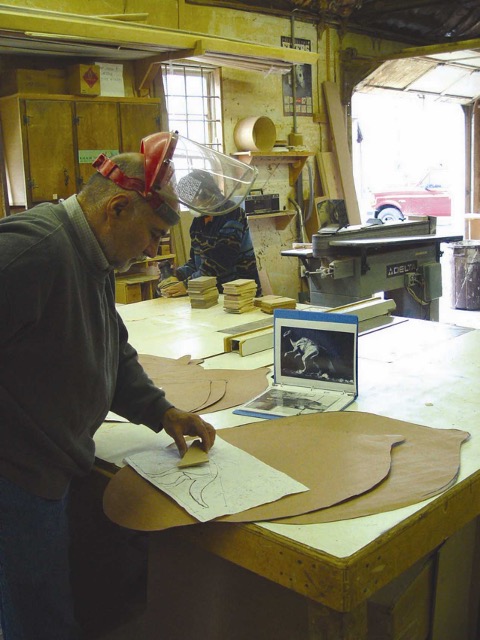
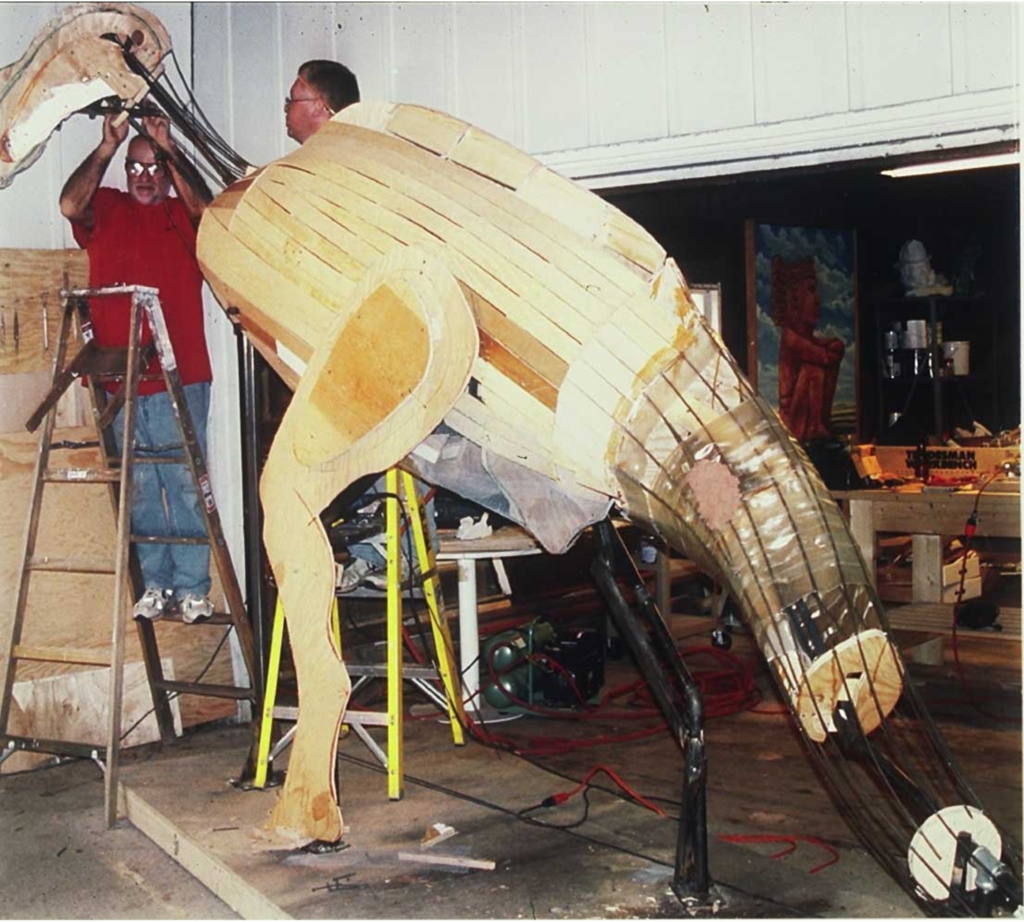
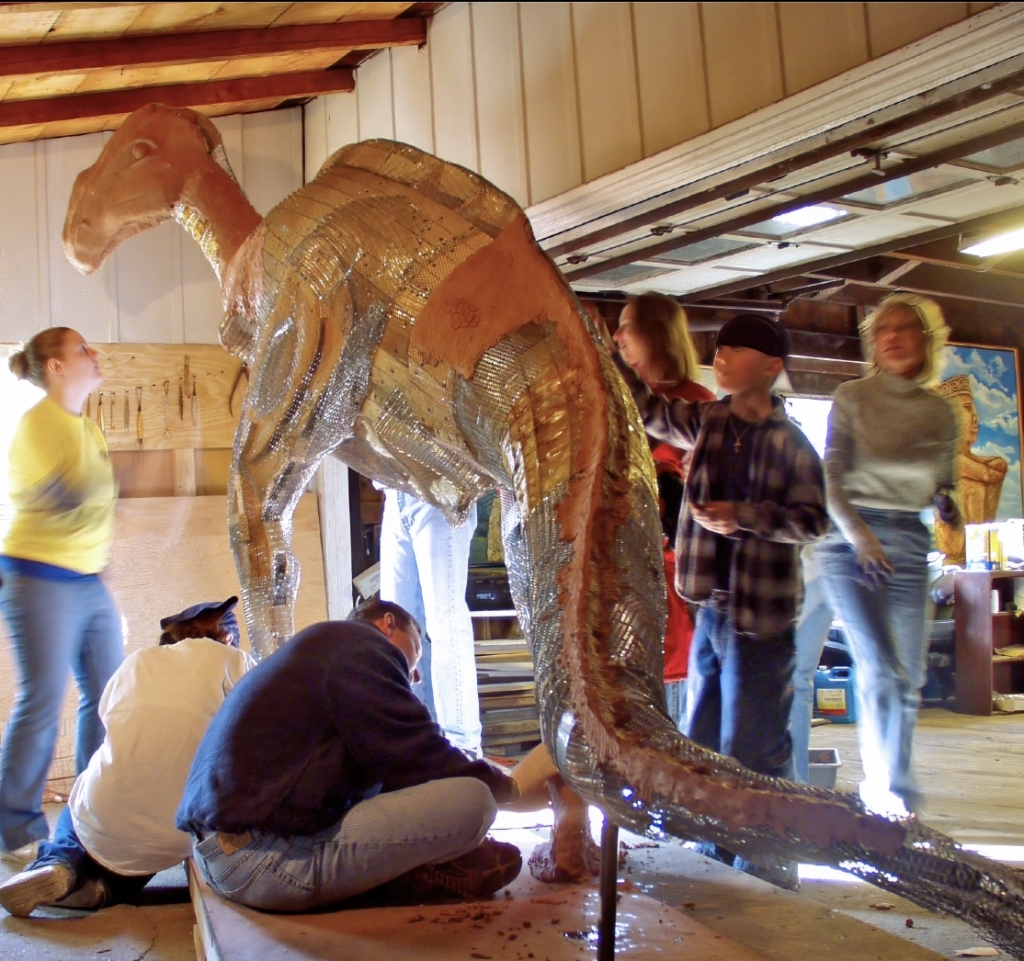
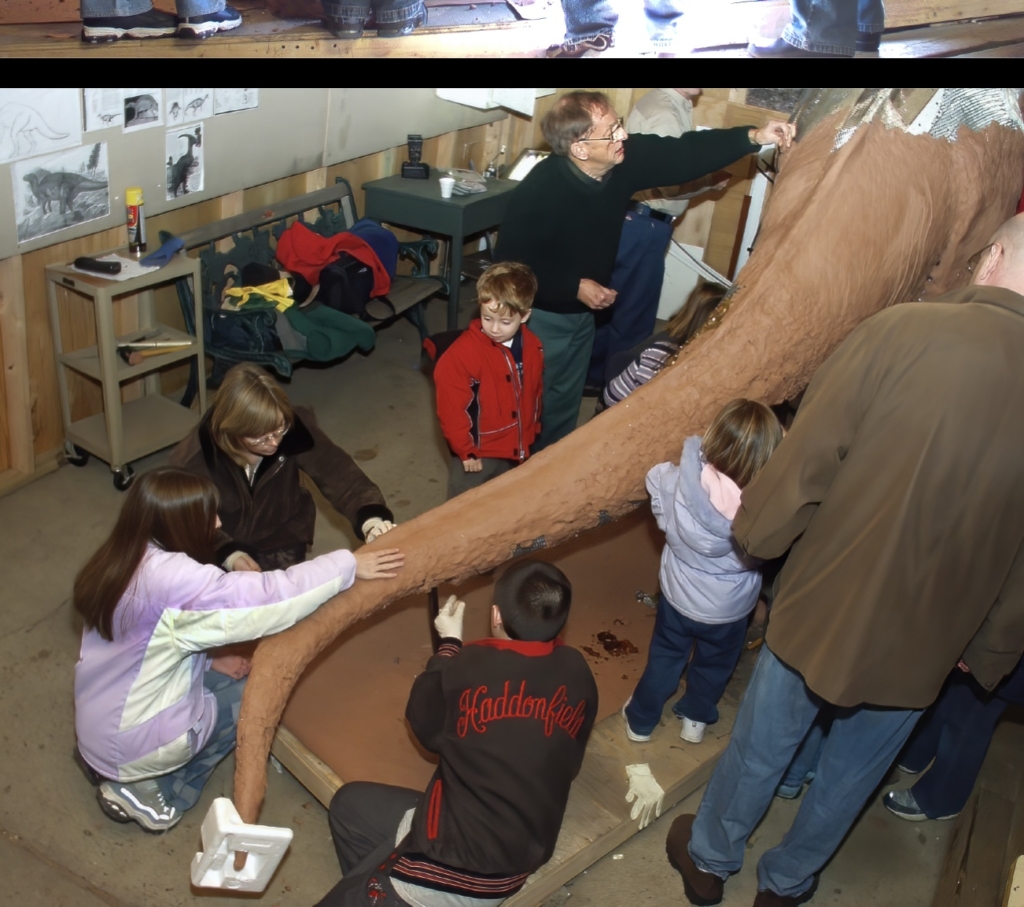
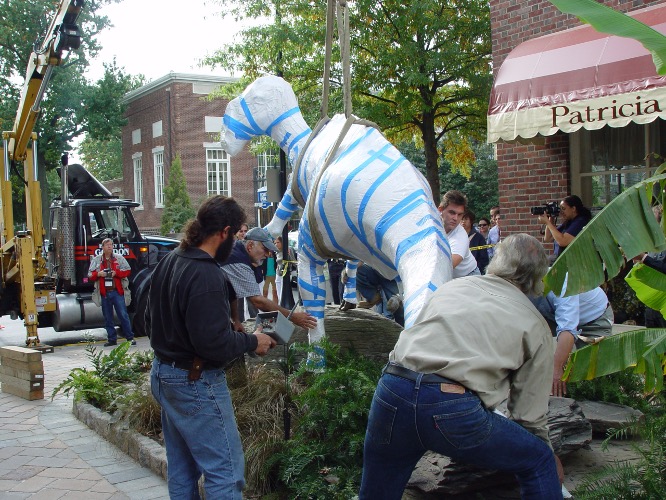
The bronze Haddy sculpture was unveiled in October of 2003, the same month in 1858 when the dinosaur fossil was found.
“… I’m really proud that we were able to do it,” the sculptor noted.
Haddy in its completed form stands 8 feet tall and about 19 feet long, with rocks, plants and a fountain added around it to resemble a dinosaur’s natural habitat. It is smaller than the real fossil, which would have stood 10 feet tall at the hips and 25 feet long.
Since the dinosaur’s head was missing, Giannotti had to get creative. He discovered during research that another dinosaur with a very similar bone structure
– the kritosaurus – was found in Colorado a few years after the borough discovered its hadrosaurus.
Giannotti used the kritosaurus’ type of head as the model for Haddy’s, then finalized his design with input from paleontology experts at the Academy of Natural Sciences in Philadelphia and the Smithsonian in Washington, D.C.
“It was an incredible thing, because they were seeing things that they’ve never seen before, a close to life-size sculpture of a hadrosaurus,” Giannotti recounted of the experts. “And I was in the presence of people who really knew what they were talking about and they gave me little pointers here and there.”
Among the “pointers” were the fact that because the dinosaur would have been living in a habitat right at the edge of an ocean, the sculpture needed an upper lip shape to show it digging into mud or dirt and large bulges in the cheeks to demonstrate how it ate.
The dinosaur was able to stand on its hind legs and walk on all fours, research showed. So for his final design, Giannotti placed the sculpture’s front legs against a rock, and the effect made Haddy appear as if she was halfway between being upright and taking steps.
For eight months, Giannotti worked on the original clay model that was stored in a barn on his property. During that time, he hosted a number of elementary-school children from around the county to see his progress.
Some of them got a piece of clay to put on the Haddy model as “their spot.”
“ … Now, 22 years later, every once in a while, I’ll see them showing somebody their spot,” Giannotti notes. “Could be their spouse, could be their kid, which is pretty amazing.”
Giannotti’s clay model was utilized to create detailed rubber molds that were then used to cast the sculpture in bronze at the foundry he uses for the majority of his work.
Giannotti was on the board of the Markheim Arts Center at the time, so he decided to make an exhibit out of the children’s pieces. He got 24 fellow adult artists to use them for works of their own, with the children’s pieces alongside adult works they inspired.
Giannotti sent his wife’s cousin, realist painter Bill Massey, an abstract piece of artwork from a kindergarten student. The latter photo shopped it with an image of the hole where Haddy was found.
Since its unveiling, the sculpture has become a borough fixture, meeting place and landmark.
“When I see kids here all of the time,” Giannotti reflected, “they’re looking up at it
… It really warms my heart.”

